How to Kickstart Your SEO Writing in 6 Steps
SEO and content go hand-in-hand. You need both in order to perform well on search results. But you can’t have one without the other.
You may have a good SEO strategy. But without great content, you can’t rank as high on Google results. And vice versa, if you have content that doesn’t target any keywords, you won’t rank as well on the SERP.
Thus, you need to be well-equipped in SEO writing to achieve your desired results.
Here’s what will be covered in this article:
- What is SEO writing?
- Difference between copywriting and SEO writing
- How Google algorithm affects your content rankings?
- Elements of SEO writing
- How to create SEO content?
- Best practices of SEO writing
What is SEO writing?
SEO writing is the process of writing content with the intention of ranking on search engines. This is done with the use of keywords naturally within the content. Great content written for SEO will appear in the top 3, if not 1, of Google results.
Search engines use crawlers to learn more about different web pages. SEO writing helps to improve and optimize the page content so that search engines can crawl the content easily.
Difference between copywriting and SEO writing
There are a few differences between copywriting and SEO writing. It is these differences that will help you make a decision on which writing style is needed for your campaigns.
But let’s take a look at what copywriting is. Copywriting is a writing style intended to build brand awareness and lead potential consumers to a call to action (CTA). It is also known as persuasive writing.
There is a distinct difference between copywriting and SEO writing. And that is how readers consume the content. Copywriting can be found on printed ads and TV commercials. Whereas with SEO writing, you can only find them on webpages.
SEO writing is also generally more suited for long-form content like articles and blog posts that spans for more than a couple thousand of words. As for copywriting, they can be found in both long-form and short-form content as well.
SEO writing also seeks to answer a question your audience may have in mind. But, you may use copywriting to talk about your product or service and its benefits from your brand’s voice.
Another difference is the targeted audience. Copywriting is mostly targeted at potential leads who are leaning towards purchasing or right at the doorstep. This is also usually at the middle of the funnel (MOFU) or bottom of the funnel (BOFU).
For SEO writing, it is usually used in content for the top of the funnel (TOFU)-audience who are looking for answers to a certain problem. But that’s not to say it is only used there. It is also used at every level of the funnel to attract an audience and leads to your product and service.
How Google algorithm affects your content rankings
Each release of Google’s algorithm is intended to bring the most relevant and useful results to search users. And to give users the most accurate results, Google’s algorithms look at many factors like your keywords, content length, content freshness, user experience, and many more.
While Google’s algorithms are more of a guideline and recommendations on what you should/should not do, it’s still best to follow them accordingly. If you optimize your content based on Google’s algorithms, it will definitely bump your rankings higher on the SERP.
Elements of SEO writing
When you’re writing for SEO, you need to ensure that you have optimized these elements when crafting your content. These are all factors that Google is looking for when determining rankings on search results.
These are elements that you need to take into consideration when you write for SEO:
1. Headline

Headlines are one of the most important things to optimize when writing for SEO. 36% of SEO experts believe that headlines/title tags are the most important SEO element.
And it’s very easy to optimize headings. You simply need to add your targeted keyword to it. Adding your keyword helps inform Google that your content is relevant to that particular search query.
But that’s not all you should do. In order to attract your audience, you need to come up with a headline that not only contains your keyword, but is also creative enough to attract visitors. Use numbers, emotional words, and adjectives to make your headline more attractive.
If you’re stumped and out of ideas, you can also use title generator tools to generate a random headline for your article or blog.
2. Content
This is a no-brainer. You can’t even begin your SEO writing if you have no content!
If you didn’t know, a great content ranks well at the top of SERP when it satisfies a user’s search query. And to achieve that, you need to conduct proper research and planning to ensure you covered all the necessary information in your article.
Optimizing your content for SEO gets easier, especially if you have performed your keyword research. Be sure to include your target and related keywords in your content. But remember to not add too many keywords until it feels unnatural (more on this later!).
3. Meta description

A meta description is an HTML element that provides a summary of your webpage to search users. While meta descriptions do not impact Google rankings directly, they can still boost your organic click-through rate.
Meta descriptions also boost your on-page SEO relevancy. Therefore, try writing a unique meta description for each page and content on your website. Generally, it’s recommended to have a length of roughly 160 characters.
4. Keyword frequency
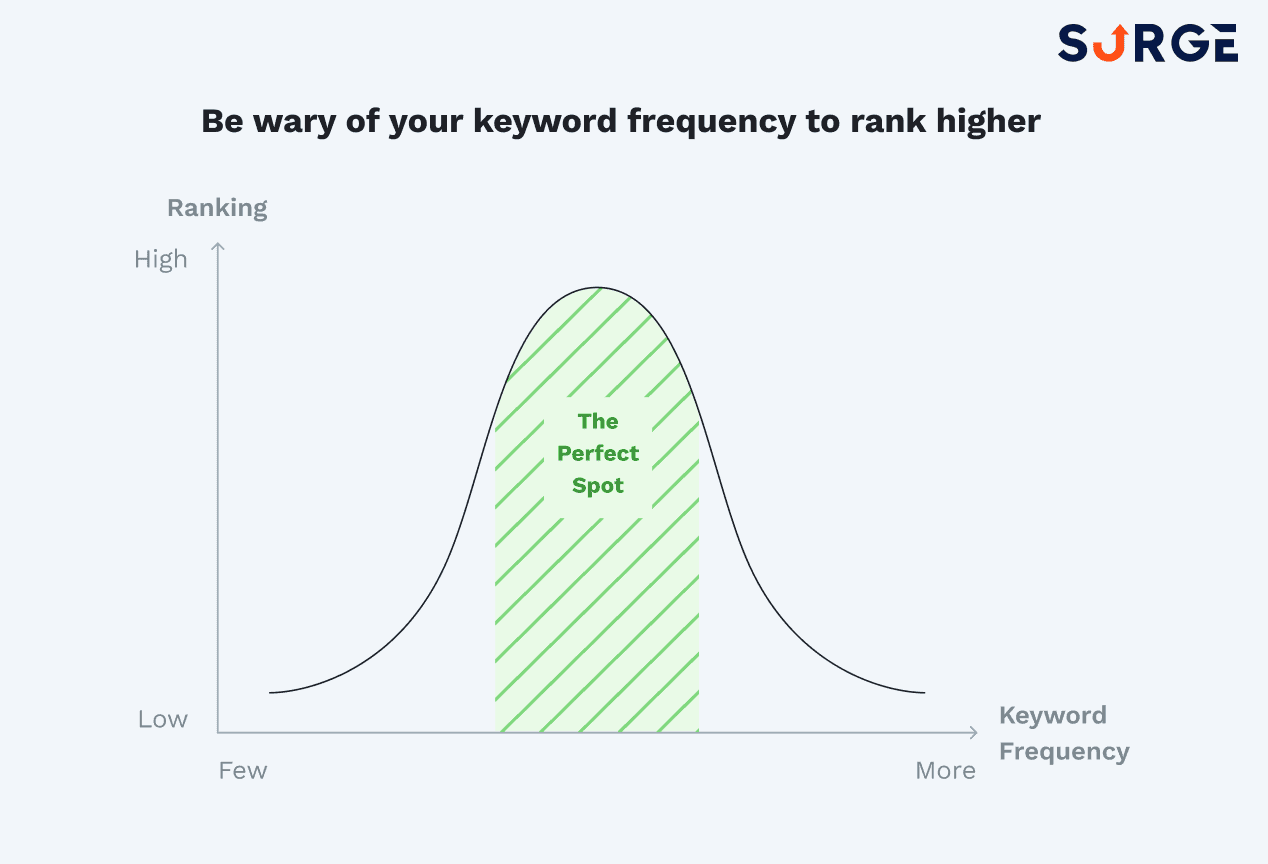
Keyword frequency refers to how often your keyword or phrase appears in your content. The more often a keyword is added to a content, the higher the keyword frequency will be for that page.
If you’re trying to rank for a keyword, you need to be wary of your keyword frequency. Too low, and Google may not take your content as “relevant enough” for the query. If it’s too high, it may send a negative signal to Google’s algorithms that you may be attempting a black-hat technique that’s also known as “keyword stuffing”.
5. Site speed

The site speed indicates how fast search users are able to see and interact with your content. Google has stated that site speed is one of the ranking factors that are used in its algorithm when ranking pages.
If your loading time takes more than 2 seconds, you would need to take methods to improve the site loading speed. It is said that conversion rates for a website drop by an average of 4.42% with each second of loading time (between seconds 0 to 5).
Site speed is also significant for user experiences. If a webpage takes longer to load, search users may leave the page in search of one that loads faster and gives them what they are searching for.
6. Page link

Page link is the URL of your webpage. You also need to ensure that your target keyword is included in your URL. This will further boost the relevancy of your content to the targeted keyword.
How to create SEO content
You can’t just decide on a topic to create content and immediately come up with a draft. Most of the work here falls on research and planning so you can continue writing without having a mental block.
SEO writing also doesn’t finish after you have published your article. You may need to periodically optimize your content post-publishing to ensure that it’s always in line with Google’s algorithms.
Here’s how you create content that is optimized for SEO.
1. Keyword research
Do you know that Google gets about 13 billion search queries per day? In a year, that could amount to 4.75 trillion searches. That’s also about 13 billion sets of search results displayed in front of the users.
If you want to outperform your competitors and appear in those search results, you need to target specific keywords and phrases your potential audience may use. And you will only know what keywords you should target by conducting keyword research.
Keyword research should be at the forefront of your SEO content writing strategy. Use keyword research tools to discover insights behind the search queries.
SurgeGraph has a keyword research tool that helps users to uncover top-performing keywords that would easily get their content ranked on Google’s SERP.

For more information on how you can optimize your keyword research, do read this: How to Effectively Conduct Keyword Research In 3 Steps.
2. Identify your target audience and user intent
To have great SEO content, you need to write content that will attract the right audience. You can’t publish content on marketing, and hope that your regular readers who are aspiring cooks to digest and enjoy reading it.
You also need to consider your target audience’s search intent when crafting the content. Are they looking for information on a specific topic? Or perhaps, they want to compare your services and a competitor’s?
The outline and flow of your content may change depending on the intent of the query. So you will need to identify the search intent as well. You can do so with SurgeGraph’s keyword research tool.
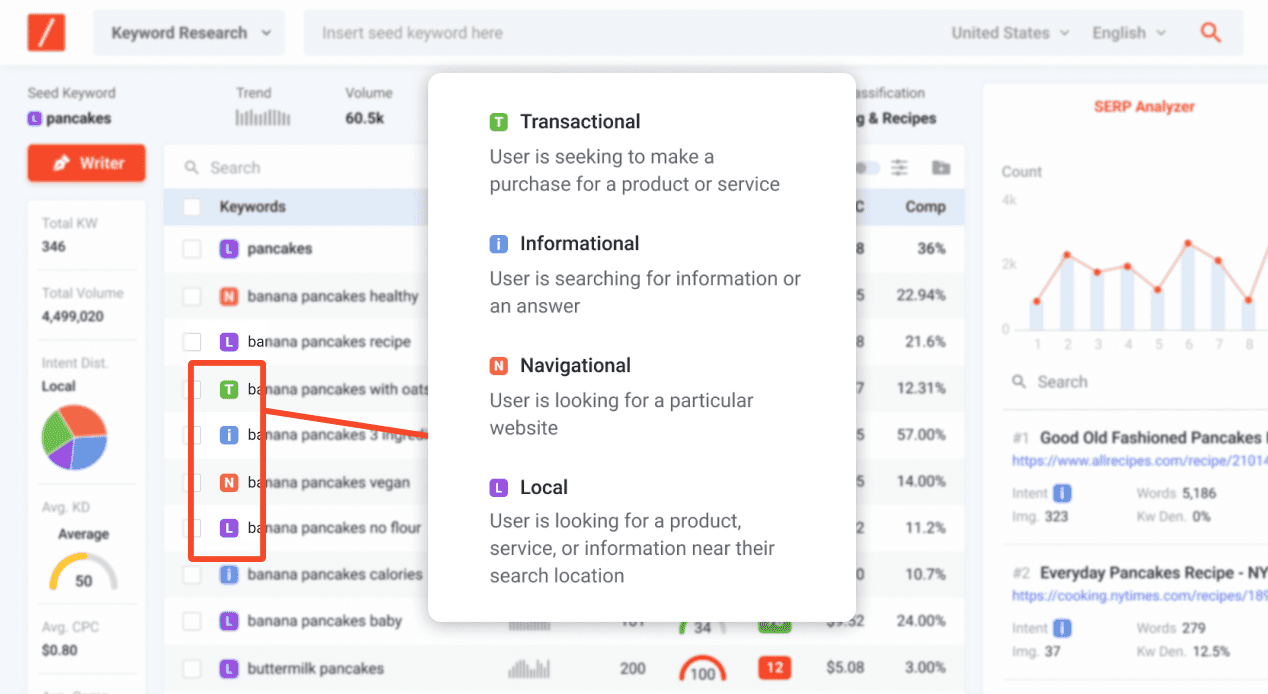
3. Outline your content
After you have your target keywords and user intent, it’s time to plot your content outline. It’s almost never a good idea to dive headfirst and attempt to write without knowing what you need to include. Therefore, your content outline will serve as a blueprint for how you want your content will turn out to be.
Writing isn’t a quick process. Bloggers have said it can take them more than 4 hours to craft a blog post with a length of 1,400 words. Hence, having a well-prepared content outline can also save you some time in your SEO content writing process.
Do more research and gather information on what you would need in your content. You can start planning out your introduction, body, and conclusion. You can also start to plan the subheadings for your content.
If you don’t have a clue on what you should include in your outline, you can look at the top-performing content on search results, or the “people also asked” section. It could be a bit of a hassle to go through each page individually.
To skip all that hassle, just use SurgeGraph!
SurgeGraph has a SERP analyzer in both its keyword research and Content Writer tool. You can use it and get an overview of the top 10 ranked articles. Select a particular result to reveal their content brief.
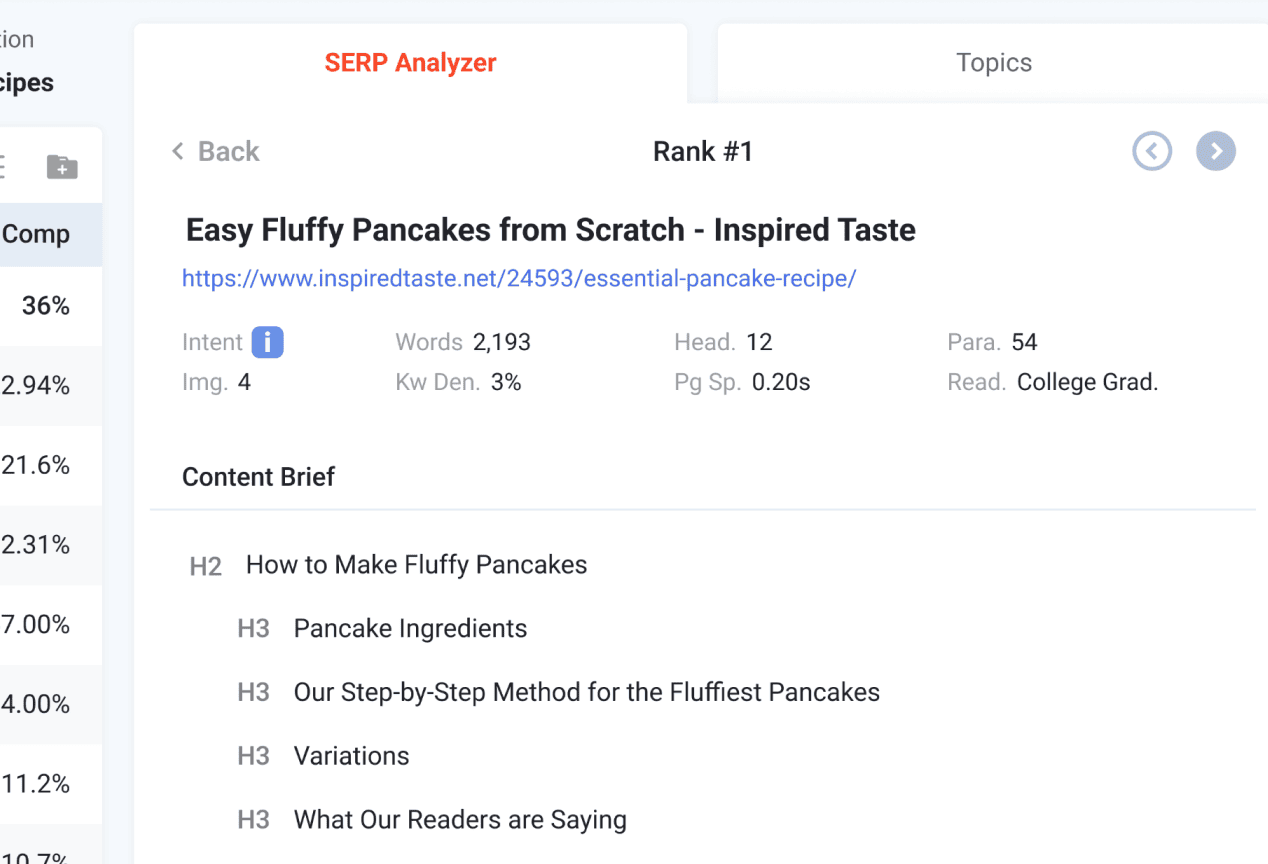
Go through the content briefs from each top-ranking result and get inspiration from their articles and put together your own content brief. The “Topics” section is also handy to get topical clusters and ideas.
4. Match content to keywords
Google favours content that is focused on context. Therefore, while you are still attempting to target a specific keyword for your content, you also want to complement it by adding contextual keywords.
Besides using SurgeGraph to look for top-performing keywords, you can also use it to look for contextual keywords. Similarly, as you write your content on Content Writer, you will also see a list of suggested keywords you can add to your content.
SurgeGraph guides you in choosing the most relevant contextual terms as it is sorted by default from the highest relevancy to the lowest relevancy. It also lets you know how many times you’ve used a specific term vs. how many time you should use it for optimized content. They’re also color-coded so you can quickly gauge how “optimally” you’re using these keywords in your content.
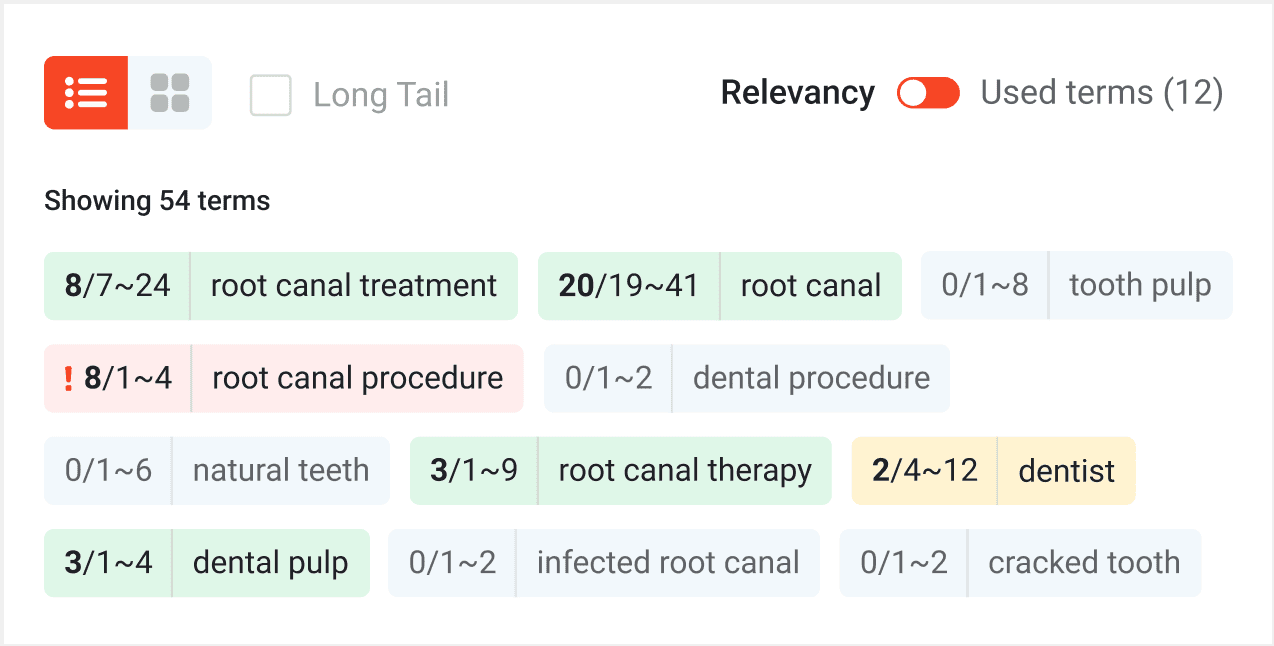
If you find yourself overwhelmed and unsure of the different possibilities of the contextual terms suggested, the content writer also gives you some examples of how those terms are used in top-ranking pages to kickstart your brain and get those creative juices flowing.
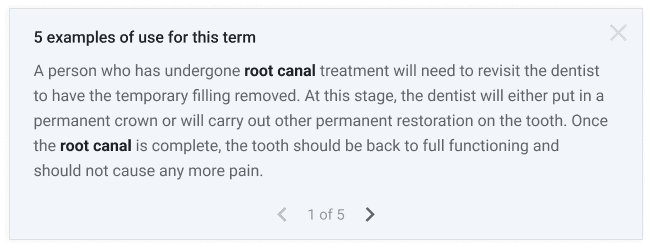
When you add a keyword from the list, the counter will automatically update to reflect the actual number of keywords that are in the content. Adding these keywords will definitely build better context as well as improve your content’s score for SEO.
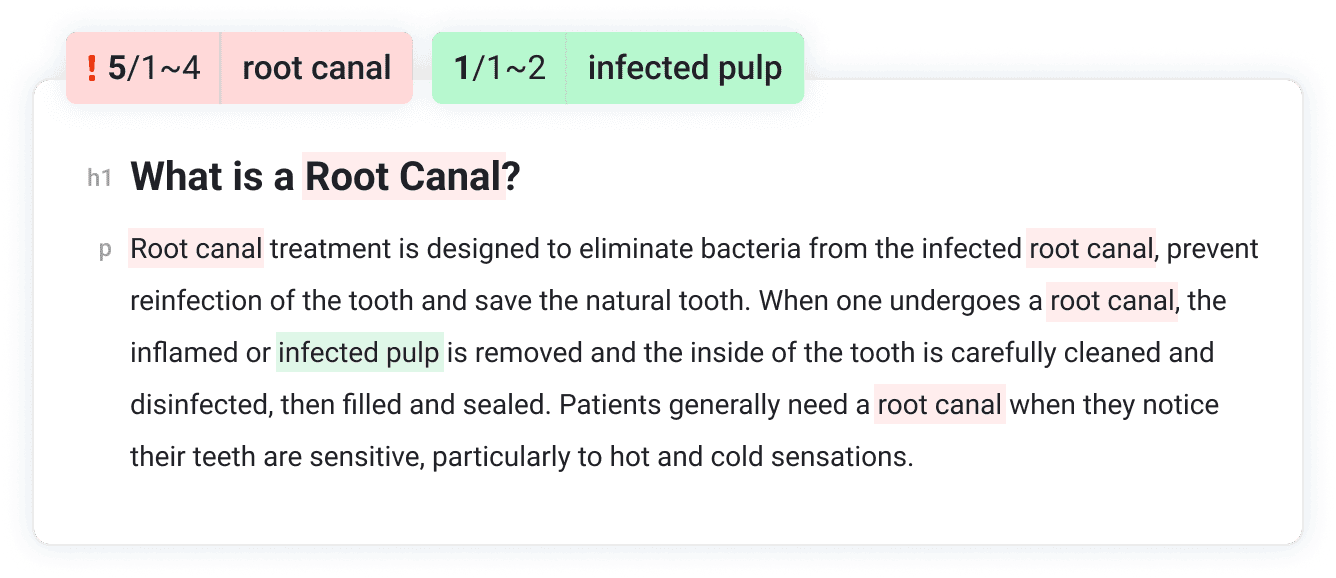
5. Content scoring – make sure it is SEO-optimized
As you piece your content together, you may wonder whether your content would perform well on the SERP. Sure, you may have included your target and contextual keywords in your article. But you won’t know how optimized it is until you actually post it on the Internet.
Alternatively, you can refer to SurgeGraph's content scoring for a quick analysis before publishing it.
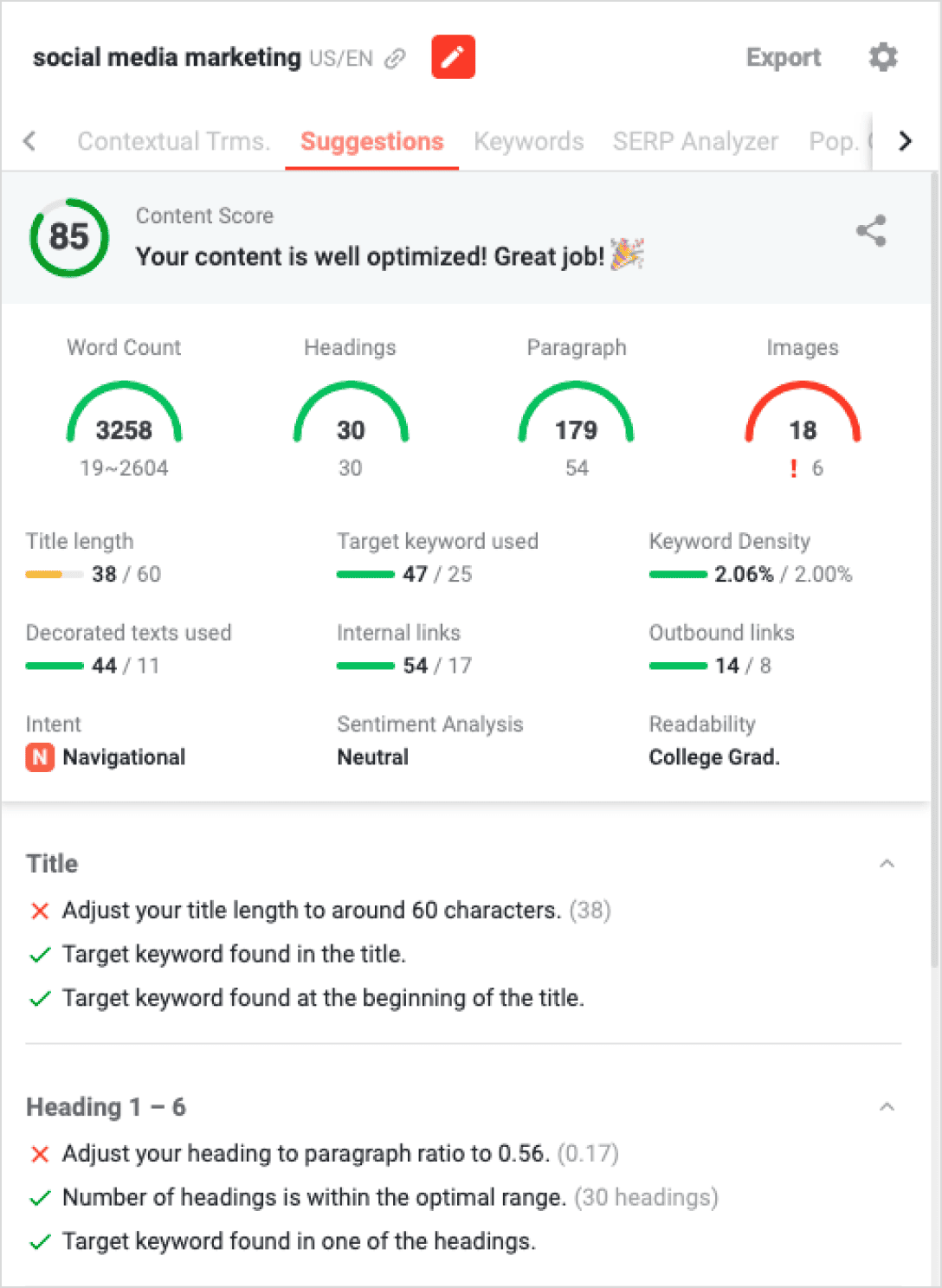
The best part about the content scoring is that it updates in real-time as you continue working away on your content. So you will know if you need to add or remove a keyword as you edit your article.
When you have a satisfactory content score, you can begin to publish your article!
6. Optimization – target keyword, content gap
After some time, you will have an idea of your content’s performance: whether it is ranking high on the search results or not. If the results are not up to your satisfaction yet, you can always reoptimize your content.
Here are two ways you can re-optimize your content: close the keyword gap and content gap.
Keyword gap is ranked keywords that you are missing out on, but your competitors are ranking for. For example, you may rank for “caps for bikers”. But your competitors rank for similar keywords like “caps for riders” and “caps for motorists”. Those could be keywords that are driving additional traffic to your competitors.
A content gap, however, is the holes in your existing content. These holes can be filled by adding subtopics that fit contextually within your article. To find these subtopics, you can go through your competitors’ content and identify the missing subtopics. SurgeGraph’s SERP Analyzer works well here too!
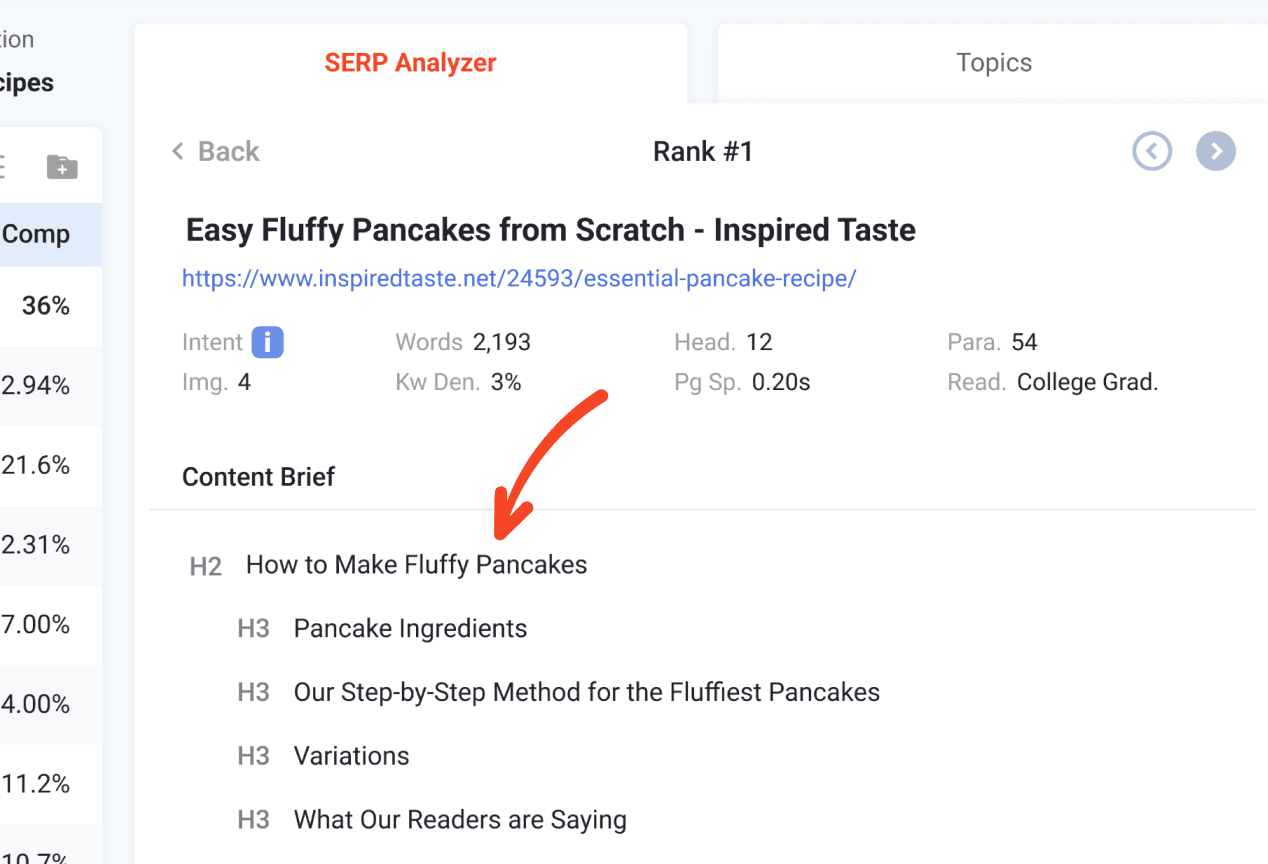
Best practices of SEO writing
By now, you will know what you should include in your content and how to create one that’s optimized for SEO. But to truly have content that’s effective for SEO, you may need to do more than that.
Below are some methods that have been proven effective when writing for SEO.
1. Keep information up to date
Before you publish your article, always ensure that your information is the latest. If you include any statistics, try looking online and see if there is any recent data you can use. Information that is outdated will not be of much use to search users.
This also applies to older articles. You can do a quick check on your published posts. Depending on how outdated the posts are, you can either update or delete them.
2. Prevent keyword stuffing
Keyword stuffing is the practice of filling a webpage with keywords in an attempt to manipulate its ranking on the search results. This is considered spamming, or a black hat technique. Stuffing a page with keyword also leads to a negative and bad user experience.
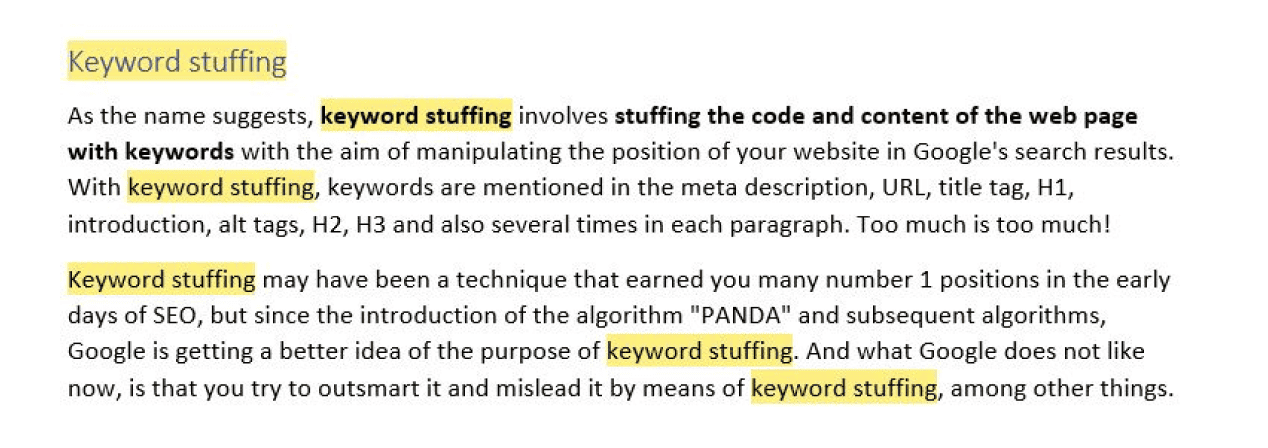
Avoid this practice as best as you can. It’s often recommended to include keywords where necessary. Google even suggested focusing on creating useful and informational content that uses keywords in context.
3. Write for people first
When you’re writing content, you should always keep in mind that your target audience are actual people. You’re creating content for them to read and digest the information you have to share, not search engines.
While you do want to add target keywords and build context so search engines can pick up the signals and rank you higher, do remember that search engines like Google have been tweaking their algorithms to evaluate and rank web content based on how a human would read it.
4. Post evergreen content
Evergreen content is content that usually stays relevant and “fresh” for a long period of time. This type of content typical never goes out of date and is always relevant to readers, regardless of the publishing date.
Some evergreen content ideas you can use is to consider formatting your content in some of the following methods:
- Lists
- Tips
- "How to" guides
- Videos
- Reviews
5. Content silo
A content silo is a method of grouping content that may be related to one another. This is done to try to build a website’s structure around keyword-based topical areas or themes.
Content silos help to provide a structure to the content. This allows search engines to have a better understanding of your entire website’s content. Adding topical content also helps to support your website’s overall authority as well as the single-page authority.
SurgeGraph has added a new feature called “Planner”. This is a keyword mapping feature allows you to group and organize your keywords. You can even organize and structure it like a content silo if you desire.

You can even add labels to each card to add your own personal notes. The features are also seamless as you can create new content from Planner.
Read this article to learn more about keyword mapping: How to Successfully Do Keyword Mapping
Conclusion
It’s important to understand and recognize the difference between content writing and SEO writing. When you have added the necessary elements and followed the right steps, you would have content that will rank well on the SERP that web traffic will be directed to your website.
SurgeGraph has a Longform AI writer that assists writers, bloggers, and digital marketers to craft content for SEO. By following the suggestions and content scoring, you will definitely be able to write for SEO after this! Just be sure to conduct your keyword research beforehand.
